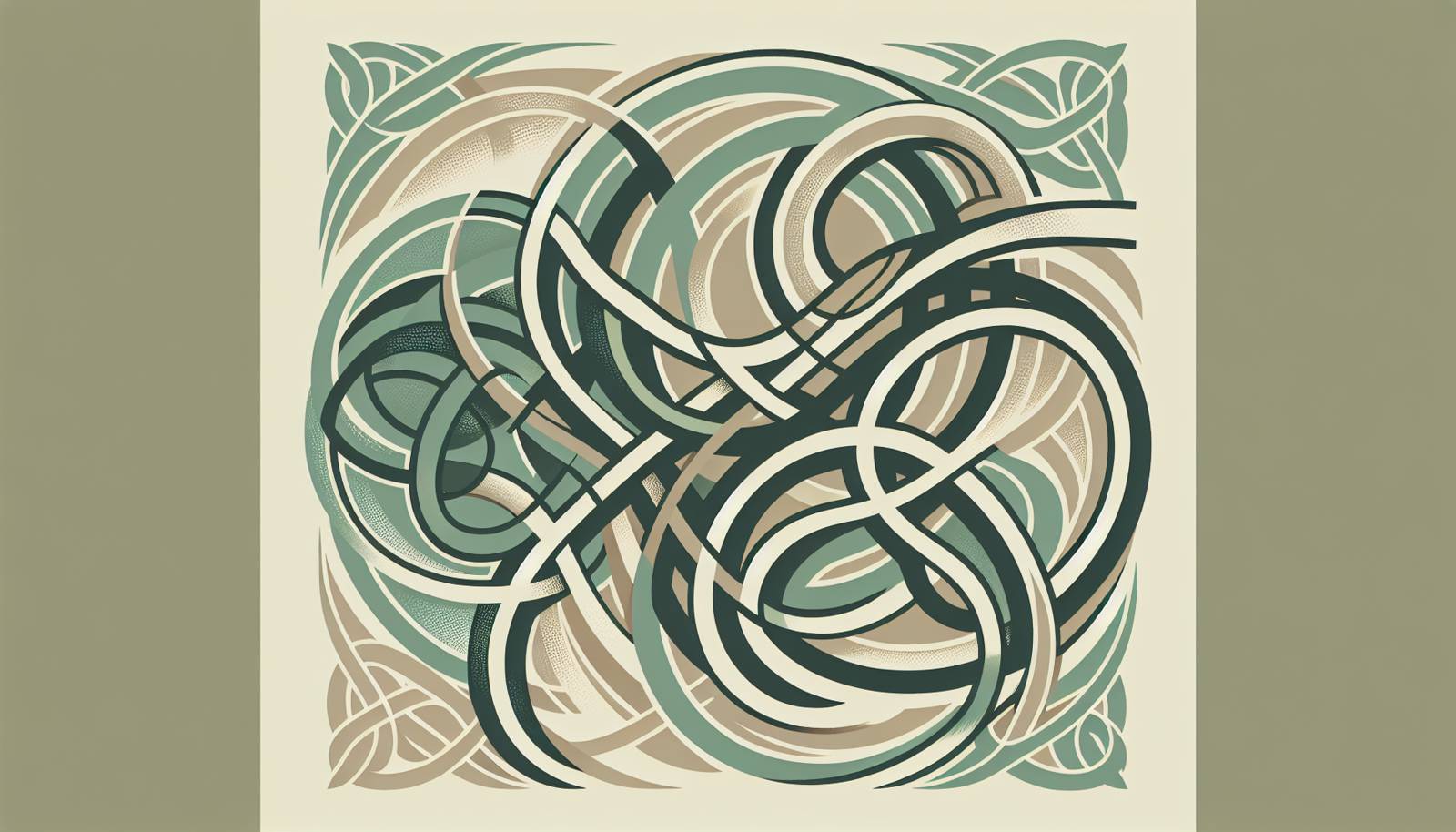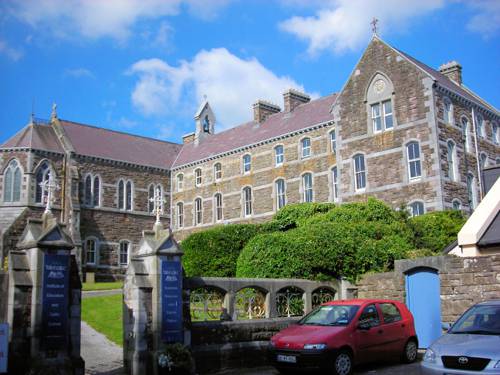
FAQ About The Influence of Celtic Spirituality on Modern Art

What is Celtic spirituality?
Celtic spirituality refers to the religious beliefs and practices originating from the Celtic people of Western Europe, particularly characterized by a reverence for nature, a focus on the interconnectedness of life, and the use of myths and symbols. It often includes elements of Druidism and various folklore, with a strong emphasis on harmony with natural elements.

How does Celtic spirituality influence modern art?
Celtic spirituality influences modern art through its themes of nature, mythology, and interconnectivity. Artists often incorporate the symbolism and imagery from Celtic lore, such as intricate knotwork, tribal symbols, and mythological creatures, infusing their work with spiritual and cultural significance. These elements help create a bridge between ancient traditions and contemporary expression.

Can you give examples of Celtic symbols used in modern art?
Common Celtic symbols used in modern art include the Celtic knot, representing eternity and interconnectedness; the Triskelion or triple spiral, symbolizing personal growth and spiritual expansion; and the Tree of Life, which signifies the connection between the earth and the heavens. These symbols are often adapted into modern artistic designs, including tattoos, sculptures, and paintings.

What are the key themes of Celtic spirituality that appeal to modern artists?
The key themes of Celtic spirituality that resonate with modern artists include the reverence for nature, the celebration of the sacredness of everyday life, mystical and mythical stories, and the idea of life as a continuous, interconnected cycle. These themes encourage a deeper exploration of cultural identity and connection with the world.

How does Celtic mythology differ from other mythologies and how does this impact art?
Celtic mythology is unique in its focus on nature and its pantheon of gods, goddesses, and other supernatural beings deeply connected to natural elements and cycles. This distinct approach provides a rich tapestry for artists to draw upon, setting it apart from other mythologies that might focus more on anthropocentric narratives. Its impact on art is seen in the preference for organic forms, natural motifs, and storytelling that emphasizes harmony and balance.

How has Celtic spirituality historically influenced Celtic art forms?
Historically, Celtic spirituality influenced traditional Celtic art through motifs that emphasized nature, such as spirals and knots, found in carvings, metalwork, and manuscripts. These designs were not merely decorative but imbued with spiritual significance, reflecting the Celts' beliefs about life's cyclical nature and the divine.

What role do nature elements play in the incorporation of Celtic spirituality into modern art?
Nature elements are central to the integration of Celtic spirituality into modern art, embodying the spiritual connection and respect for the natural world that Celtic culture valued. Artists might use natural settings, landscapes, or natural motifs like leaves, animals, and water to create works that evoke this spiritual connection and reflect the themes of harmony and balance.

Are there modern artists particularly known for incorporating Celtic spirituality into their work?
Yes, several contemporary artists are known for incorporating Celtic spirituality into their work. One example is George Bain, often referred to as the "father of modern Celtic design," whose work emphasized the traditional motifs and styles reimagined for contemporary contexts. Modern artists often take inspiration from traditional Celtic art to explore cultural identity and spirituality in their work.

What are some common misconceptions about Celtic spirituality in modern art?
A common misconception is that Celtic spirituality represented in modern art is purely historical or decorative, overlooking the deeper spiritual and philosophical meanings. Another misconception is that these art forms are limited to regions with historical Celtic influence, while in reality, their universal themes and aesthetics have global appeal.

How do artists balance traditional Celtic symbols with contemporary art styles?
Artists balance traditional Celtic symbols with contemporary art styles by integrating time-honored motifs with modern techniques and materials. This can involve using digital media, abstract interpretations, or blending traditional symbols into contemporary themes, allowing the ancient and the modern to coexist and mutually enhance each other.

Is there a particular art medium that is more conducive to exploring Celtic spirituality?
No single art medium is more conducive, but certain mediums like sculpture, painting, and textile art often lend themselves well to exploring Celtic spirituality. These forms allow for the detailed intricate patterns and symbols that are characteristic of Celtic art, and their tactile nature can enhance the spiritual expression of the artwork.

How does the concept of interconnectedness in Celtic spirituality reflect in its artistic expressions?
The concept of interconnectedness in Celtic spirituality is often illustrated through repeating motifs such as spirals, knots, and overlapping shapes in art, symbolizing the interrelation of all things in the universe. This is reflected in artworks that emphasize symmetry, balance, and continuity, suggesting a holistic view of the world.

Are there aspects of Celtic spirituality in modern art that align with contemporary ecological movements?
Yes, the emphasis on nature and interconnectedness in Celtic spirituality aligns well with contemporary ecological movements. Artists inspired by these spiritual principles may focus on environmental themes, sustainability, and the sacredness of nature, advocating for a deeper respect and protection of the natural world through their work.

How is the theme of cycles and seasons present in Celtic-inspired modern art?
Cycles and seasons are a prevalent theme in both Celtic spirituality and the art it inspires, often depicted through seasonal motifs, changing light, and circular patterns that reflect the natural rhythm of the earth. This theme not only honors the cyclical nature of life but also emphasizes renewal and rebirth.

What influence does Celtic music have on Celtic-inspired modern art?
Celtic music, with its rhythmic and melodic traditions, often influences modern art by setting a mood or theme that artists then translate visually. The evocative nature of Celtic tunes can inspire artistic compositions that mirror the narrative and emotion prevalent in the music, fostering a multisensory exploration of Celtic spirituality.

Can Celtic spirituality in modern art contribute to personal spiritual practices?
Yes, modern art incorporating Celtic spirituality can contribute significantly to personal spiritual practices by providing visual representations of spiritual beliefs and meditative elements. Art can serve as a focal point for meditation, reflection, or inspiration, helping individuals connect with the deeper themes of nature and interconnectivity central to Celtic spirituality.

Do Celtic-inspired artworks have a place in contemporary galleries and museums?
Absolutely, Celtic-inspired artworks are featured in contemporary galleries and museums worldwide. These works are appreciated not only for their aesthetic appeal but also for their cultural, historical, and spiritual resonance, enriching the curatorial narrative and offering insights into ancient beliefs and their modern interpretations.

Is digital art used to express Celtic spirituality in today's artworks?
Yes, digital art is a popular medium for expressing Celtic spirituality today. Artists use digital tools to create intricate Celtic designs, animations, and interactive experiences that allow both the depth of traditional symbolism and the innovation of modern technology to come into play, making these ancient themes accessible to a wider audience.

What challenges do artists face when modernizing Celtic spiritual themes?
Artists face several challenges when modernizing Celtic spiritual themes, including maintaining authenticity while infusing new ideas, avoiding cultural appropriation, and ensuring that the spiritual and cultural significance is honored and understood rather than diluted. Balancing tradition with innovation requires sensitivity and creativity.

How does the global interest in Celtic spirituality impact its depiction in modern art?
The global interest in Celtic spirituality has greatly impacted its depiction in modern art by broadening its reach and interpretation. Artists from diverse backgrounds might explore and incorporate these themes, expanding the dialogue between cultures and bringing new perspectives to ancient visions, thus enriching the contemporary art scene.
